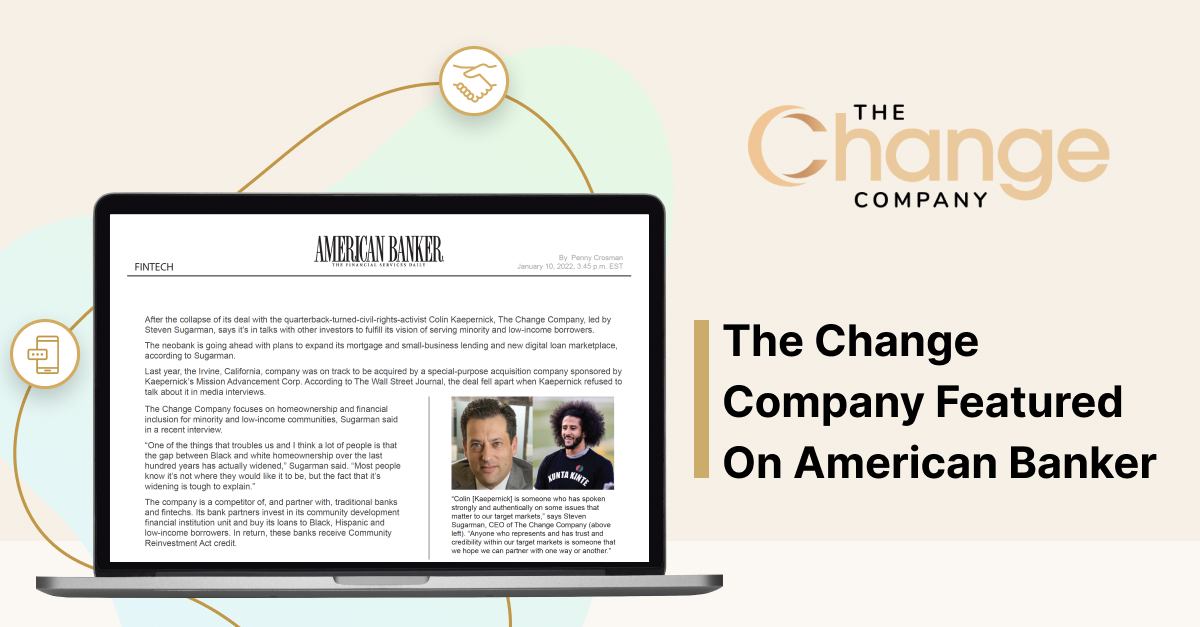Minority Borrowers Face New Threats of Predatory Lending
Housing prices are at an all-time high, interest rates are skyrocketing, and homeownership is less affordable than ever before. Meanwhile, the Federal Reserve Board is implementing policies aimed at lowering home prices, increasing unemployment, and slowing economic activity.
Today is the time to protect the most vulnerable Americans by ensuring that banks are not enticing people into loans they can’t afford, to buy homes at prices that can’t be justified. Unfortunately, certain banks are doing the exact opposite – they are using loopholes in consumer protection laws to launch new loan programs specifically designed to target minorities. These loans are putting Black and Hispanic borrowers, who lack money for down payments and closing costs and often have low credit scores, into unaffordable loans for overpriced properties.
Instead of learning from the mistakes that led to the Great Recession of 2008, banks are circumventing Consumer Financial Protection Bureau (CFPB) guidance on qualified mortgages and developing Special Purpose Credit Programs (SPCP) that violate consumer protection regulations. For instance, Bank of America recently introduced a new SPCP, ironically named the “Community Affordable Loan Solution,” that charges its minority borrowers higher rates in exchange for waiving credit, down payment, closing costs, and other requirements relating to affordability. While Bank of America characterizes the new loan as being a part of a small SPCP pilot program, that will give no solace to those unfortunate borrowers who are duped into these loans that could not be better designed if the intent was to spike minority foreclosures and bankruptcies.
Bank SPCP programs are being developed without proper consumer protections, without accountability to the communities they target, and will result in a new generation of foreclosures in Black and Hispanic communities across America.
In 2013, the CFPB completed its retrospective of the abusive lending practices of the early 2000s and proposed a new regulation. They called this Regulation Z. At that time, the CFPB clearly defined home loans to minority and low-income Americans as predatory when the borrower does not have the ability to repay the loan except through the sale or foreclosure of their home. As a result, consumer protections were put in place to ensure that borrowers could afford the loans being made. These protections collectively defined a “qualified mortgage” (that is, a mortgage that is presumptively not predatory). Banks asked for, but were denied, exemptions to Regulation Z. These banks sought to expand high-risk lending to minority and low-income borrowers who could not meet the requirements of a qualified mortgage.
President Obama’s Director of the CFPB, Richard Cordray, rejected the requests for exemptions from Regulation Z’s consumer protections by stating, “The Bureau has also carefully considered the comments requesting a full or limited exemption from the ability-torepay requirements for certain creditors or for certain programs intended to facilitate access to credit for LMI consumers … the Bureau declines to expand the exemption to loans that meet the regulatory requirements of the Community Reinvestment Act or similar programs.”
In short, the CFPB determined it was too dangerous to allow large banks (and even nonprofits, credit unions, and mutuals) to avoid consumer protections by developing SPCPs targeting minority and low-income borrowers when such programs are not otherwise compliant with the CFPB’s ability to repay rules.
Meanwhile, Director Cordray and the CFPB developed a thoughtful approach to mortgage regulations by providing community development financial institutions (CDFIs) certified by the United States Department of the Treasury with a unique ability to meet the needs of minority and low-income borrowers without risking predatory practices. CDFIs are lenders who primarily serve minority and low-income borrowers who are not served by banks and traditional lenders. The CPFB found that CDFI governance requirements protected consumers from abusive practices and therefore could be trusted to serve our most vulnerable communities with many of the additional protections of Regulation Z. The CFPB made clear that banks seeking exemptions from Regulation Z and its “ability to repay” rules could simply partner with CDFIs to develop innovative and responsible programs to serve underbanked Americans. This partnership model allowed the CFPB to satisfy the dual goals of robust lending in minority and low-income communities with the protection of consumers from abusive and predatory lending practices.
CDFIs have proven themselves to be responsible lenders to minority and lowincome borrowers. Consumers who borrow from a CDFI are protected by the certification requirements that include a requirement to ensure the CDFI is accountable to underserved borrowers through a representative board, the requirement of a community development mission, and a primary focus on lending to minority and underbanked populations in a fair and responsible way. The CFPB concluded that CDFIs “provide residential mortgage loans on reasonably repayable terms … and that the government approval and oversight associated with [CDFI] designations ensures that there is little risk that consumers would be subject to abusive lending practices.”
Unfortunately, the current leadership in Washington is so focused on broadly curing the structural inequities in the banking system (which do continue to persist) that they appear to be blind to the re-emergence of abusive lending practices. And when regulators do attempt to curb these predatory practices, the banking industry uses its enormous power and resources to squash such efforts. Just recently, the American Bankers Association, the U.S. Chamber of Commerce, and several other trade groups filed a federal lawsuit in Texas to stop the CFPB from looking for discriminatory practices when conducting routine examinations of financial firms.
Make no mistake, banks are using these SPCPs to circumvent the requirements of Regulation Z without the controls that work for CDFIs. Allowing banks to avoid consumer protection laws and the CFPB regulations specifically designed to protect the most vulnerable consumers is a crisis in the making.
It is critical to intermediate CDFIs into these SPCPs and any other consumer lending program that seeks freedom from the requirements Regulation Z places on traditional bank and non-bank lenders. SPCP can be extremely valuable but only when used prudently and with proper controls that prevent putting borrowers into predatory loans they can’t afford. CDFIs and their community boards understand that loans that provide flexible underwriting standards for underbanked borrowers need to include compensating factors, such as lower loan-to-value ratios, larger cash reserves, or higher credit scores. CDFIs understand the importance of serving those denied bank credit for uneconomic reasons. They also understand the negative consequences of making loans to borrowers who are unable to repay the loans in full.
It is predatory to offer loans to borrowers where a reasonable expectation of repayment cannot be formed. Upfront teaser rates and zero down payments may sound good, but they can be misused to make loans that a borrower cannot afford. These loans are making a comeback today as traditional lending volumes decline. When a borrower is induced into a loan where they can’t afford the longterm payments, that loan is abusive. When such loans are targeted at vulnerable minority populations in frothy real estate markets, the consequences can be catastrophic. Today’s 100% loan-to-value borrowers who are able to purchase a house with no-closing-costs loans are tomorrow’s victims of foreclosures, ruined credit, and a diminished financial future.
The surest sign that a bank knows its SPCP is making loans to borrowers who are unable to afford their loan is that the bank will not make similar underwriting generally available to all its clients. It is one thing to use an SPCP to reward a credit-worthy underserved borrower with a lower rate, but it is quite another to use an SPCP to loosen credit underwriting, introduce layered risk, and make loans without a reasonable expectation of repayment. It is a sad day when, like today, Black and Latino borrowers are the primary targets of such unaffordable loans.
Respected economists, investment analysts, and investors are all warning of imminent distress in the housing market. Several current estimates anticipate 15-20% reductions in home prices in the coming months. Nonetheless, bank lenders increasingly are targeting these most vulnerable Americans to take on unaffordable new debt to buy homes at a time when these same banks are warning institutional, high-net-worth (and white) clients that home prices are expected to fall. Clearly, banks with such programs do not have governance in place to hold their institution accountable to minority and low-income communities and protect them from abusive lending practices. This is exactly what Cordray’s CFPB feared and sought to prevent.
In today’s economic environment, the work of CDFIs to level the playing field in residential lending is critical. CDFIs understand they must expand access to capital without compromising the consumer protections that are vital to preventing the mistakes of the past. Responsible banks must not go it alone. It is critical that CDFIs are part of the process when lenders seek to provide innovative lending solutions to address these important issues of homeownership in America. Increasing home loans to credit-worthy Black and Brown borrowers is critical, but Cordray’s CFPB was right that bank SPCP must be done in conjunction with certified CDFIs to ensure the loans are fair and affordable.
Reverend Everett Bell Jr. is the Chair of The Change Company CDFI, LLC Community Board (changellc.com) and Senior Pastor at Bethel African Methodist Episcopal Church in Monrovia.



.jpg)



.jpg)
















.png)














.jpeg)






























%2525201%252520(1).png)




